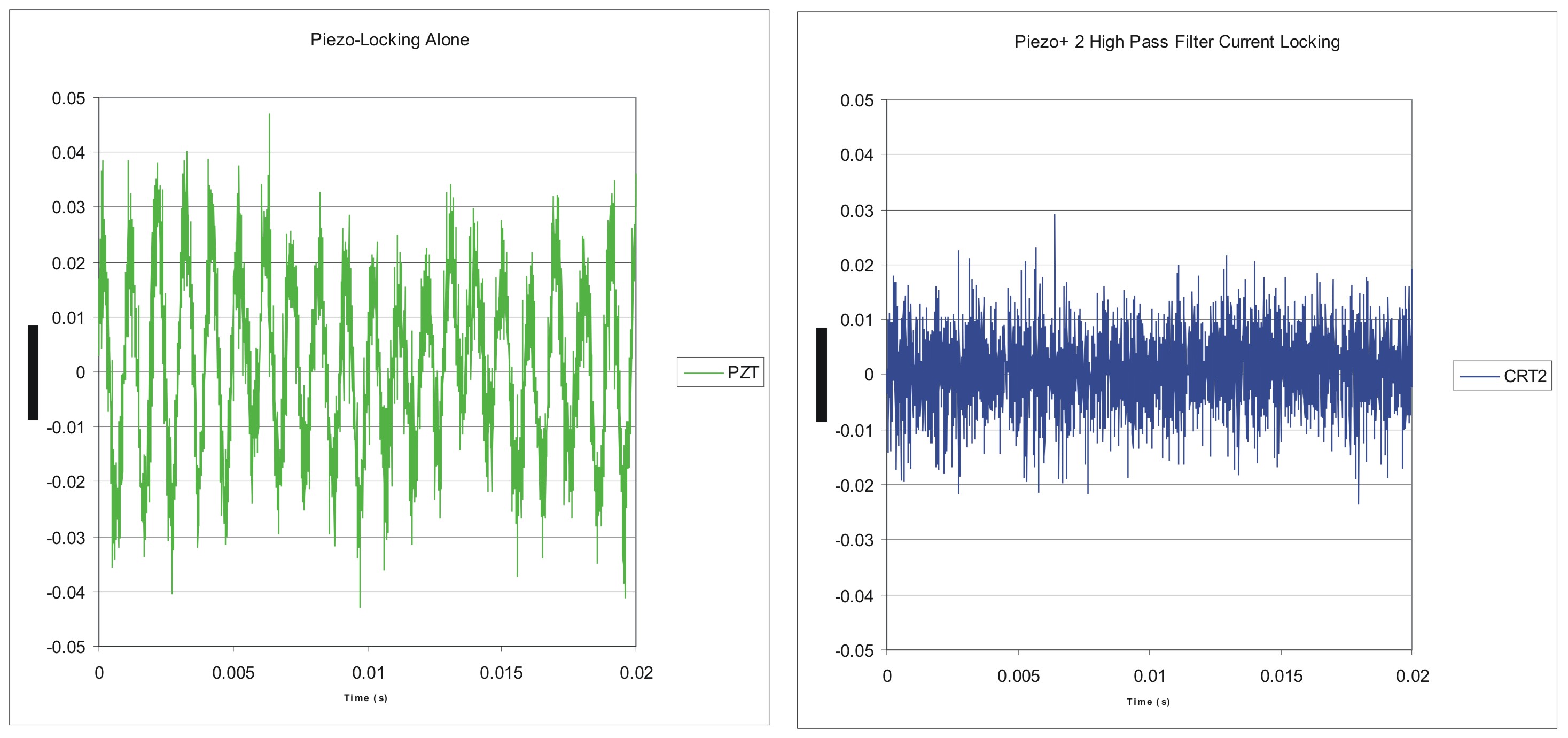Laser Feedback Control: Sam Wong (2005)
Improved Laser Control: Current and Piezo Feedback
One of the limitations to the original laser stabilization system described in [2] is that it relies solely on the mechanical motion of a piezoelectric disk to control the output frequency of the laser. This technique is sufficient for atom trapping but suffers from a limited frequency response owing to the mechanical nature of the control. To improve matters, Sam Wong (Biomedical Engineering Technology) has been designing and testing an improved feedback system. The improved design takes the error signal generated from the saturated absorption arrangement and, effectively, separates the signal into low frequency and high frequency components. The low frequency portion is corrected, as before, by the motion of the piezoelectric disk while the high frequency portion is sent into the laser current control electronics. The laser current can be adjusted quite rapidly so it can achieve a greater overall degree of control of the laser output frequency.
The circuit design, based on the original schematics in [2] and a current feedback circuit from [3].

Figure S1. The error correction signal used to stabilize the laser's output frequency is shown as a function of time in the figure above. To the left is the original piezoelectric disk locking technique while to the right is the piezo locking augmented by feedback to the laser current controller. As can be seen, there is significant improvement, especially for lower frequency error components.
References
[2] C. Wieman, G. Flowers, and S. Gilbert, Am. J. Phys. 63 (4), 317-330
[3] Thijs Hoogenveen, Stabilizing a Diode Laser to an External Reference, June 2003.
